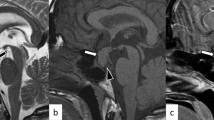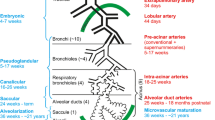Summary
A histological study has been made of the thymus in mice during acute involution and regeneration following administration of hydrocortisone. The cortex undergoes remarkable changes in the microscopic structure during involution and regeneration. During involution the lymphocytes in the cortex rapidly decrease and are removed. Then a rapid replacement of lymphocytes occurs during regeneration. On the basis of formation and repopulation of lymphocytes the regenerative process of the cortex is divided into seven phases. The reconstitution of the cortex proceeds more rapidly in females than in males. Newly formed lymphocytes take origin from the mesenchymal cells in the cortex. Such mesenchymal cells become distinguishable from epithelial reticular cells during involution. They appear to engulf destroyed lymphocytes and debris during involution and then transform into immature lymphoid cells during early regeneration. The findings may support the recent reutilization concept that destroyed lymphocytes are phagocytized and reutilized by reticular cells in heteroplastic differentiation into immature lymphoid cells. In the cortex PAS-positive sudanophilic cells which are derived from the perivascular and subcapsular connective tissue appear with involutionary changes. They become gradually reduced again with progress of the regeneration of the cortex. During involution the medulla are temporarily filled with lymphocytes migrated from the cortex. The epithelial reticular cells in the medulla are found grouped in cords or clumps in the severely involuted thymus. In the medulla there are two types of PAS-positive epithelial reticular cells; one contains a large, colloid-like, PAS-positive inclusion within the cytoplasm and the other has cytoplasm diffusely filled with PAS-positive substance. During involution and early regeneration, the former type increases while the other shows almost no significant changes. Hassall's corpuscles somewhat increase in frequency during involution and early regeneration.
Similar content being viewed by others
References
Ackerman, G. A., and R. A. Knouff: Lymphocytopoiesis in the bursa of Fabricius. Amer. J. Anat. 104, 163–205 (1959).
Antopol, W.: Anatomic changes produced in mice treated with excessive doses of cortisone. Proc. Soc. Exp. Biol. (N.Y.) 73, 262–265 (1950).
Baillif, R. N.: Thymic involution and regeneration in the albino rat, following injection of acid colloidal substances. Amer. J. Anat. 84, 457–510 (1949).
Baker, B. L., D. J. Ingle and C. H. Li: The histology of the lymphoid organs of rats treated with adrenocorticotropin. Amer. J. Anat. 88, 313–349 (1951).
Bargmann, W.: Der Thymus. In: Handbuch der mikroskopischen Anatomie des Menschen, herausgeg. von W. v. Möllendorff, Bd. VI/4. Berlin: Springer 1943.
Bompiani, G.: Der Einfluß des Säugens auf die Restitutionsfähigkeit des Thymus nach der Schwangerschaft. Zbl. Path. 25, 929–935 (1914).
Brecher, G., K. M. Endicott, H. Gump and H. P. Brawner: Effects of X-ray on lymphoid and hemopoietic tissues of albino mice. Blood 3, 1259–1274 (1948).
Deansley, R.: Experimental studies on the histology of the mammalian thymus. Quart. J. micr. Sci. 72, 247–275 (1929).
Dougherty, T. F.: Effect of hormones on lymphatic tissue. Physiol. Rev. 32, 379–401 (1952).
—: Lymphocytokaryorrhectic effects of adrenocortical steroids. In: The lymphocyte and lymphocytic tissue, edit. by J. W. Rebuck, p. 112–124. New York: Paul B. Hoeber 1960.
—, and A. White: Functional alterations in lymphoid tissue induced by adrenal cortical secretion. Amer. J. Anat. 77, 81–116 (1945).
Downey, H.: Cytology of rabbit thymus and regeneration of its thymocytes after irradiation; with some notes on the human thymus. Blood 3, 1315–1341 (1948).
Field, E. J.: Some morphological effects of large doses of cortisone in the rabbit with special reference to the thymus and appendix. J. Anat. (Lond.) 90, 428–439 (1956).
Fulci, F.: Die Restitutionsfähigkeit des Thymus der Säugetiere nach der Schwangerschaft. Zbl. allg. Path. path. Anat. 24, 968–974 (1913).
Grégoire, Ch.: Über das Verhalten des Lymphocyts bei der lymphoepithelialen Symbiose in der Thymus. Virchows Arch. path. Anat. 303, 457–480 (1939).
—: Regeneration of the involuted thymus after adrenalectomy. J. Morph. 72, 239–261 (1943).
Hamilton, L. D.: Control and functions of the lymphocyte. Ann. N.Y. Acad. Sci. 73, 39–46 (1958).
Hill, M.: Re-utilization of lymphocyte remnants by reticular cells. Nature (Lond.) 183, 1059–1060 (1959).
—, and M. Pospíšil: Studies on the activation of lymphatic nodule centres of the spleen. Acta anat. (Basel) 41, 205–227 (1960).
Ito, T.: Über einschlußhaltige Zellen im Thymus des Goldhamsters. Z. Zellforsch. 49, 739–747 (1959).
—, and T. Hoshino: Weight changes of the thymus during regeneration in hydrocortisoneinduced involution in intact and gonadectomized mice, with particular reference to sex difference. Anat. Anz. 109, 436–443 (1961).
Loewenthal, L. A., and Ch. Smith: Studies on the thymus of the mammal. IV. Lipidladen foamy cells in the involuting thymus of the mouse. Anat. Rec. 112, 1–15 (1952).
McAlpine, R. J.: Alkaline glycerophosphatase in the developing thyroid, parathyroid, and thymus of the albino rat. Amer. J. Anat. 96, 191–227 (1955).
Ringertz, N., A. Fagraeus and K. Berglund: On the action of cortisone on the thymus and lymph nodes in mice. Acta path. microbiol. scand. 30, Suppl. 93, 44–51 (1952).
Sainte-Marie, G., and C. P. Leblond: Tentative pattern for renewal of lymphocytes in cortex of the rat thymus. Proc. Soc. Exp. Biol. (N.Y.) 97, 263–270 (1958a).
—: Origin and fate of cells in the medulla of rat thymus. Proc. Soc. Exp. Biol. (N.Y.) 98, 909–915 (1958b).
Selye, H.: Thymus and adrenals in the response of the organism to injuries and intoxications. Brit. J. exp. Path. 17, 234–248 (1936).
Smith, Ch.: Studies on the thymus of the mammal. XII. Histochemistry of the thymuses of C57BL/6 and AKR strain mice. J. Nat. Cancer Inst. 26, 389–403 (1961).
—, and L. M. Ireland: Studies on the thymus of the mammal. I. The distribution of argyrophil fibers from birth through old age in the thymus of the mouse. Anat. Rec. 79, 133–153 (1941).
—, and D. A. Kieffer: Studies on thymus of the mammal. X. Regeneration of irradiated mouse thymus. Proc. Soc. Exp. Biol. (N.Y.) 94, 601–605 (1957).
Spicer, S. S.: Siderosis associated with increased lipofuscins and mast cells in aging mice. Amer. J. Path. 37, 457–475 (1960).
Tanaka, H.: Studies on the mode of lymphatic cell proliferation, with special reference to the peculiarity of the thymus. [Japanese.] Acta haemat. jap. 19, 710–729 (1956).
Tanaka, T.: Embryological studies of the thymus in the albino mouse. [Japanese.] Acta anat. Nipponica 21, 450–461 (1943).
Tesseraux, H.: Physiologie und Pathologie des Thymus unter besonderer Berücksichtigung der pathologischen Morphologie. Leipzig: Johann Ambrosius Barth 1959.
Trowell, O. A.: Re-utilization of lymphocytes in lymphopoiesis. J. biophys. biochem. Cytol. 3, 317–318 (1957).
—: Some properties of lymphocytes in vivo and in vitro. Ann. N.Y. Acad. Sci. 73, 105–112 (1958a).
—: The lymphocyte. Int. Rev. Cytol. 7, 235–293 (1958 b).
Tschassownikow, N.: Einige Daten zur Frage von der Struktur der Thymysdrüse auf Grund experimenteller Forschungen. (Gewebszüchtung in vitro, Röntgenbestrahlung, Vitalfärbung mit Lithion-Karmin.) Z. Zellforsch. 8, 251–295 (1929).
—: Zur Frage nach dem Bau des Thymusretikulums im normalen und zurückgebildeten Organ. Z. mikr.-anat. Forsch. 19, 338–372 (1930).
Udall, V.: The action of cortisone on the thymus of the nestling rat. J. Path. Bact. 69, 11–15 (1955).
Weaver, J. A.: Changes induced in the thymus and lymph nodes of the rat by the administration of cortisone and sex hormones and by other procedures. J. Path. Bact. 69, 133–139 (1955).
Author information
Authors and Affiliations
Rights and permissions
About this article
Cite this article
Ito, T., Hoshino, T. Histological changes of the mouse thymus during involution and regeneration following administration of hydrocortisone. Zeitschrift für Zellforschung 56, 445–464 (1962). https://doi.org/10.1007/BF00335625
Received:
Issue Date:
DOI: https://doi.org/10.1007/BF00335625




